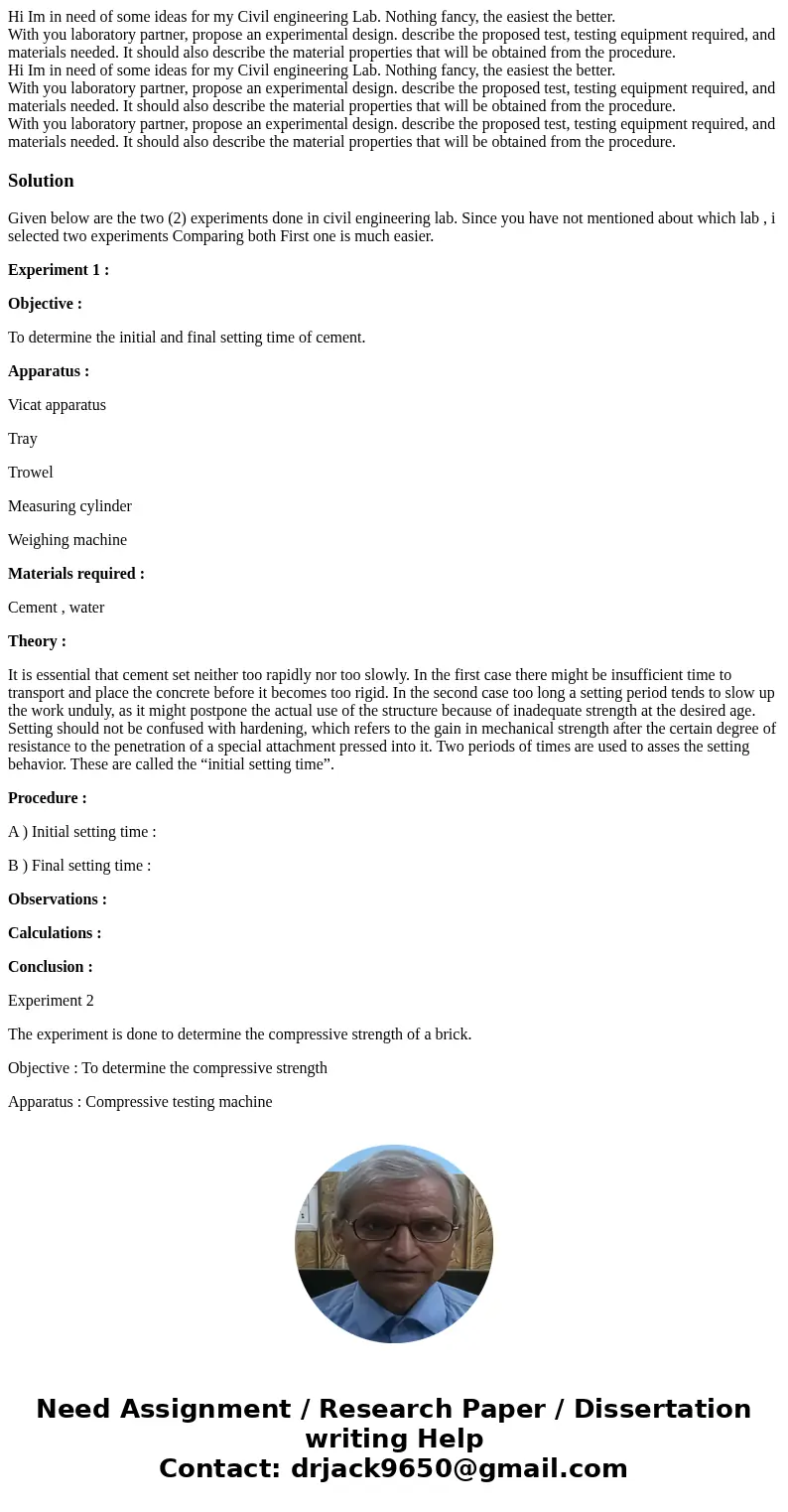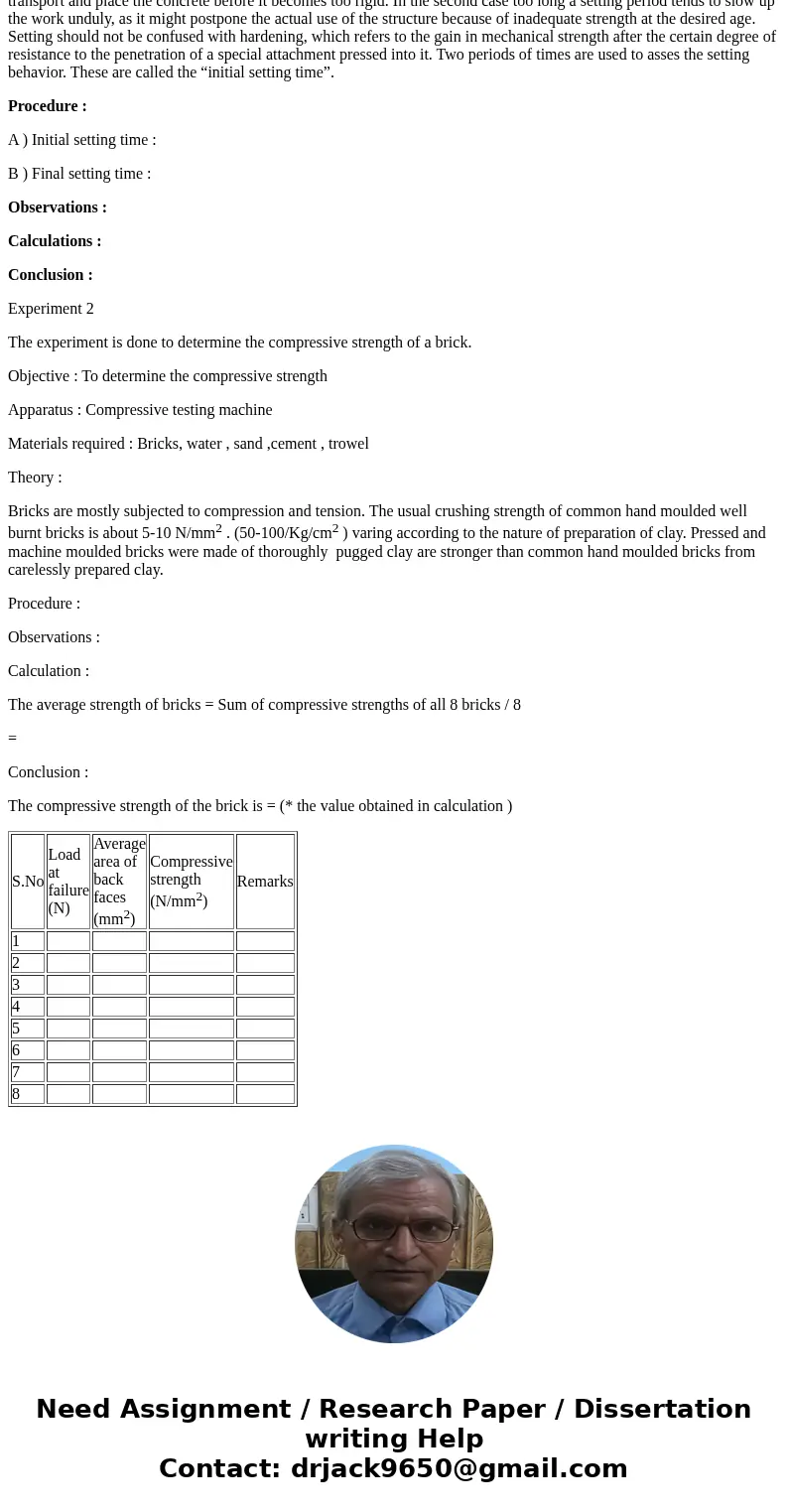Hi Im in need of some ideas for my Civil engineering Lab Not
Solution
Given below are the two (2) experiments done in civil engineering lab. Since you have not mentioned about which lab , i selected two experiments Comparing both First one is much easier.
Experiment 1 :
Objective :
To determine the initial and final setting time of cement.
Apparatus :
Vicat apparatus
Tray
Trowel
Measuring cylinder
Weighing machine
Materials required :
Cement , water
Theory :
It is essential that cement set neither too rapidly nor too slowly. In the first case there might be insufficient time to transport and place the concrete before it becomes too rigid. In the second case too long a setting period tends to slow up the work unduly, as it might postpone the actual use of the structure because of inadequate strength at the desired age. Setting should not be confused with hardening, which refers to the gain in mechanical strength after the certain degree of resistance to the penetration of a special attachment pressed into it. Two periods of times are used to asses the setting behavior. These are called the “initial setting time”.
Procedure :
A ) Initial setting time :
B ) Final setting time :
Observations :
Calculations :
Conclusion :
Experiment 2
The experiment is done to determine the compressive strength of a brick.
Objective : To determine the compressive strength
Apparatus : Compressive testing machine
Materials required : Bricks, water , sand ,cement , trowel
Theory :
Bricks are mostly subjected to compression and tension. The usual crushing strength of common hand moulded well burnt bricks is about 5-10 N/mm2 . (50-100/Kg/cm2 ) varing according to the nature of preparation of clay. Pressed and machine moulded bricks were made of thoroughly pugged clay are stronger than common hand moulded bricks from carelessly prepared clay.
Procedure :
Observations :
Calculation :
The average strength of bricks = Sum of compressive strengths of all 8 bricks / 8
=
Conclusion :
The compressive strength of the brick is = (* the value obtained in calculation )
| S.No | Load at failure (N) | Average area of back faces (mm2) | Compressive strength (N/mm2) | Remarks |
| 1 | ||||
| 2 | ||||
| 3 | ||||
| 4 | ||||
| 5 | ||||
| 6 | ||||
| 7 | ||||
| 8 |


 Homework Sourse
Homework Sourse